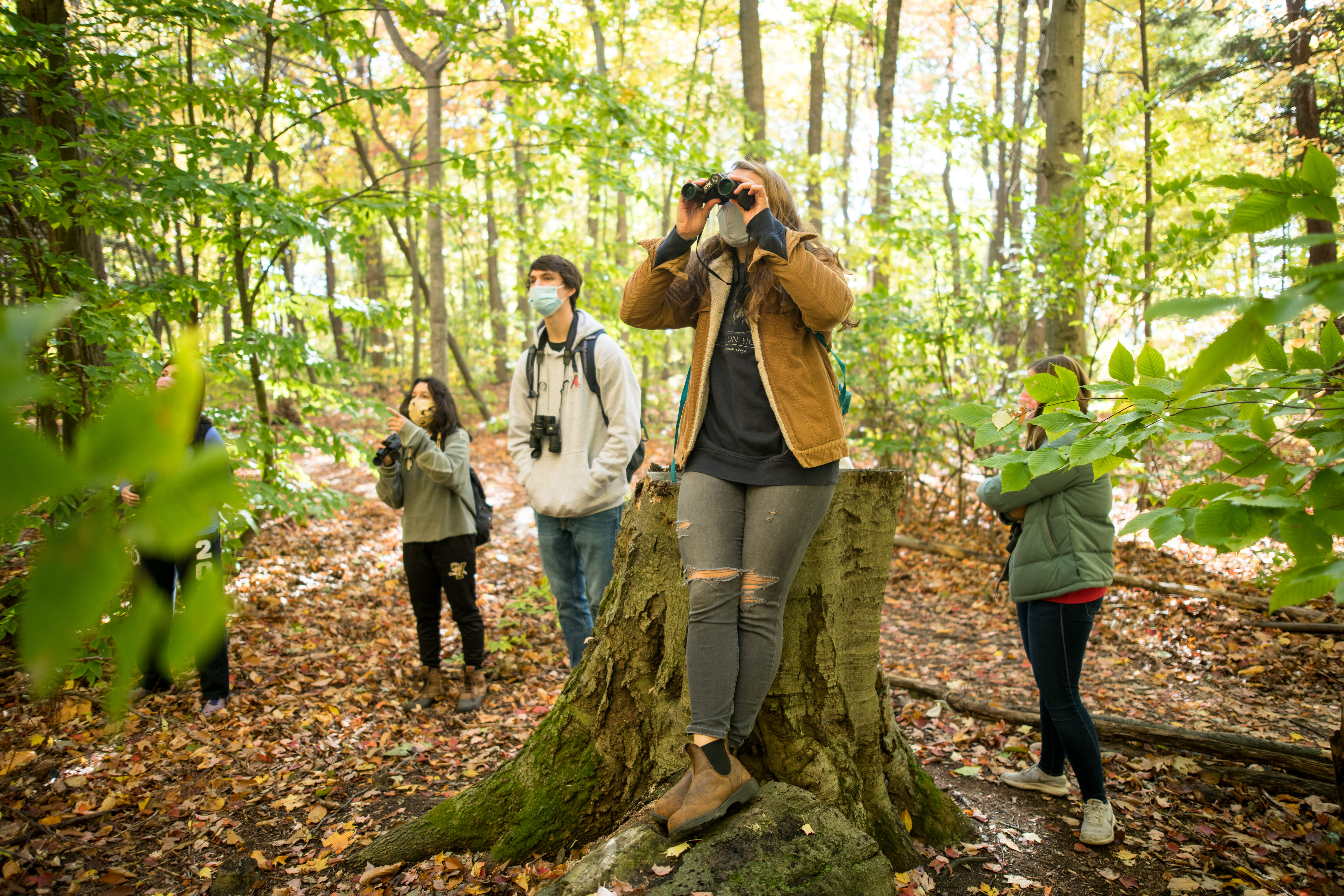What does it take to get some people to go outside and experience nature? For some urban dwellers, it took the COVID-19 pandemic, researchers say.
The new study finds that 26% of people visiting parks during early months of the COVID-19 pandemic had rarely – or never – visited nature in the previous year.
The study, by researchers at the University of Vermont (UVM), is one of the first to explore how COVID-19 has changed Americans’ relationship with nature. The research was published today by PLOS ONE.
“During the pandemic, many people visited urban forests or local natural areas for the first time in many months or even years,” said senior author Brendan Fisher, a professor in UVM’s Rubenstein School of Environment and Natural Resources and the Gund Institute for Environment.
To investigate how people used nature to cope with the physical and mental challenges of the COVID-19 pandemic, the researchers employed online surveys of over 400 visitors to urban greenspaces and other local naturals areas around greater Burlington, Vermont, an area of roughly 214,000 residents, or roughly a third of the state’s population.
As COVID-19 health protocols were introduced, nearly 70% of park users increased their visits to local nature. An overwhelming number of respondents – 81% – reported an increased importance for these areas, and access to them. Nearly 70% of first time or infrequent visitors said access to these places during COVID-19 was very important.
While 27% of people reported reducing their group size when visiting urban nature, another 11% of visitors increased their group size during COVID-19. This aligns with the 17% of respondents who reported that these natural areas allowed them safe spaces to socialize during COVID-19.
Park users’ most common reasons for visiting natural areas and parks were: getting outside, exercise, connecting to nature, finding peace and quiet, birding, dog walking, and time with children. Researchers found that 66% of people used these natural areas to find peace and quiet, and 32% reported these places as spaces for contemplation, activities that have been shown to reduce stress.
“Access to urban natural areas may be delivering mental health benefits during a time when they are most needed,” said Fisher, director of both UVM’s Environmental Program and the university’s ten natural areas, totaling 2,527 acres. “People need more space for peace and contemplation and safe spaces to be social when so many other outlets are closed to them.”
According to researchers, demand for urban green space is increasing at a time when many communities are seeing losses of urban natural areas or uncertain priority for them. In many areas in the United States, access to urban green space is unequal and a function of income and race. Given that COVID-19 has hit lower income Americans the hardest, the lack of access to green space may compound the effects of COVID-19.
“Infectious disease experts predict that viruses, like those causing COVID-19, will increase in frequency in the future,” said Nelson Grima, who led the study as a postdoctoral researcher while he was at UVM. “Natural areas and their budgets should be safeguarded and, if possible, enhanced to maintain and improve human wellbeing especially in times of crises, even during a declining economy.”
Background
Despite media reports – and personal experience – that suggest more Americans are visiting nature during the pandemic, very few peer-reviewed studies have been published on the issue to date. This study—along with another UVM study published in PLOS ONE this week—and recent research from Norway are three of the first, globally.
In addition to Fisher and Grima, study authors include undergraduate students—Haley Sommer, Will Corcoran, and Corinne Hill-James in UVM’s Environmental Program—and UVM Natural Areas manager Benjamin Langton. This is part of UVM’s commitment to high-impact learning and student success.
“It’s no secret that the pandemic upended our routines and our ability to work in the ways that we used to,” said Sommer, now in UVM’s accelerated master’s program. “I’m grateful for the work that our cohort of students, graduates, and professors created and to have made an impact in communicating the importance of access to nature, especially during times of uncertainty.”
In the spring of 2020, COVID-19 forced the state of Vermont to impose restrictions—business and school closures, event cancelations, social distancing, stay-at-home orders, and limitations on gatherings and travel. In addition to the significant economic impacts of COVID-19, concerns arose about less obvious effects on mental health from stress, isolation, and disconnection. Leaders and the medical community encouraged people to turn to outdoor activities to improve their sense of wellbeing.
Across Vermont, UVM owns and manages its natural areas for teaching and research, and public recreation. Researchers focused on seven UVM natural areas located within the immediate surroundings of Burlington. The study also included 18 parks and natural areas managed by other entities including the city’s parks department. All 25 areas encompass hiking and walking trails, and each area contains a different set of ecosystems—from wetlands and open waters to forests, fields, and farmland.
